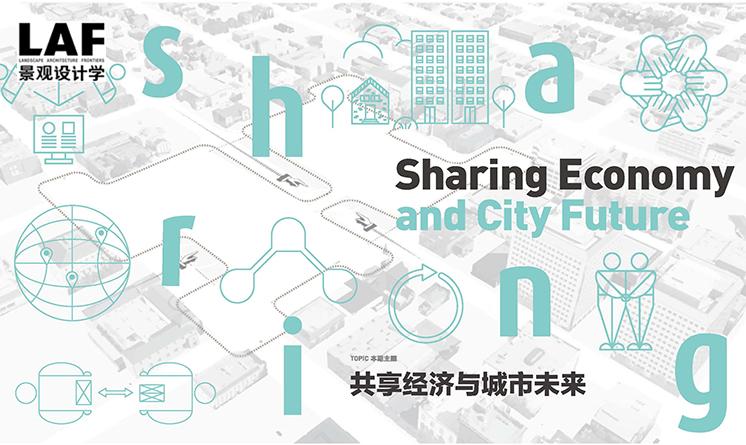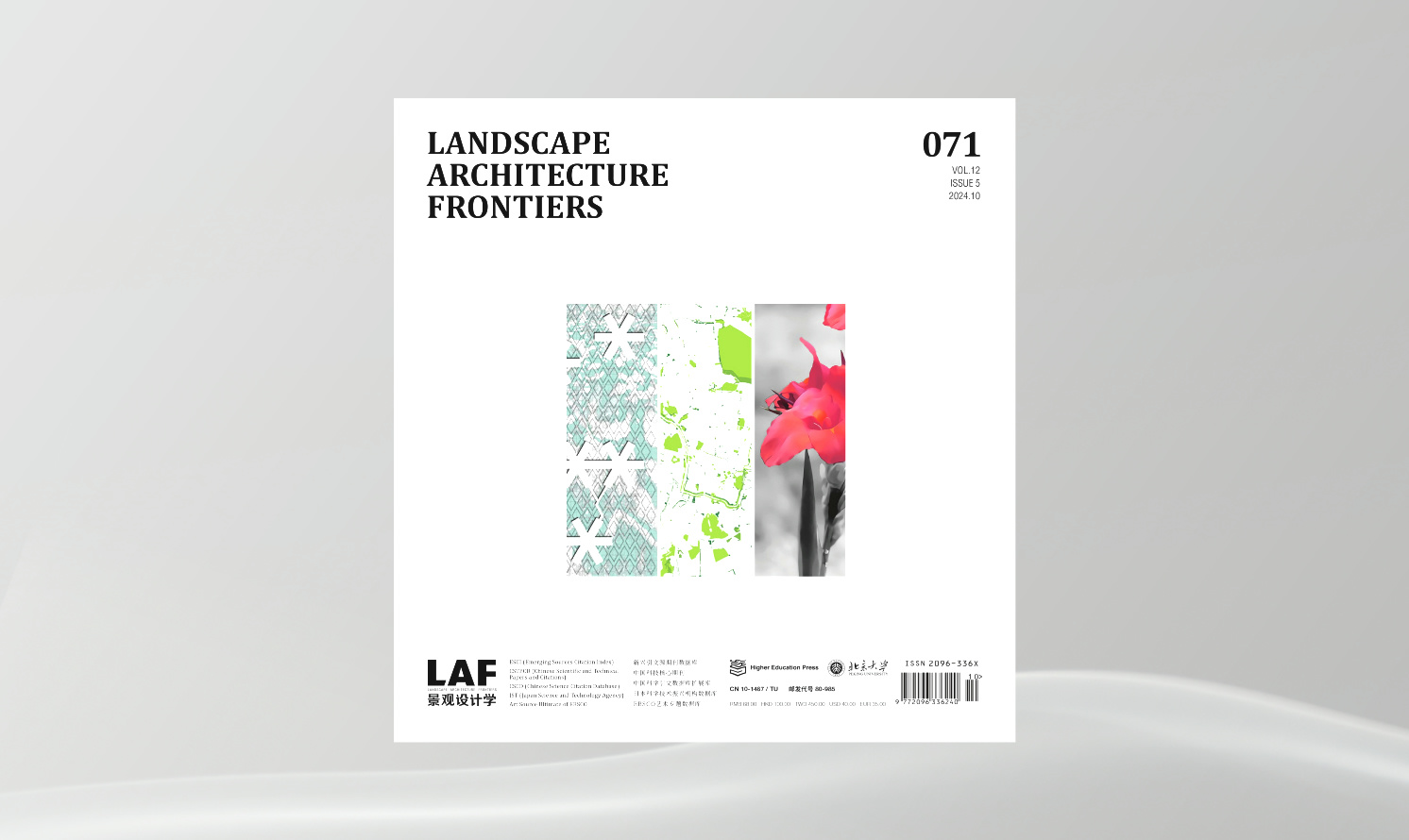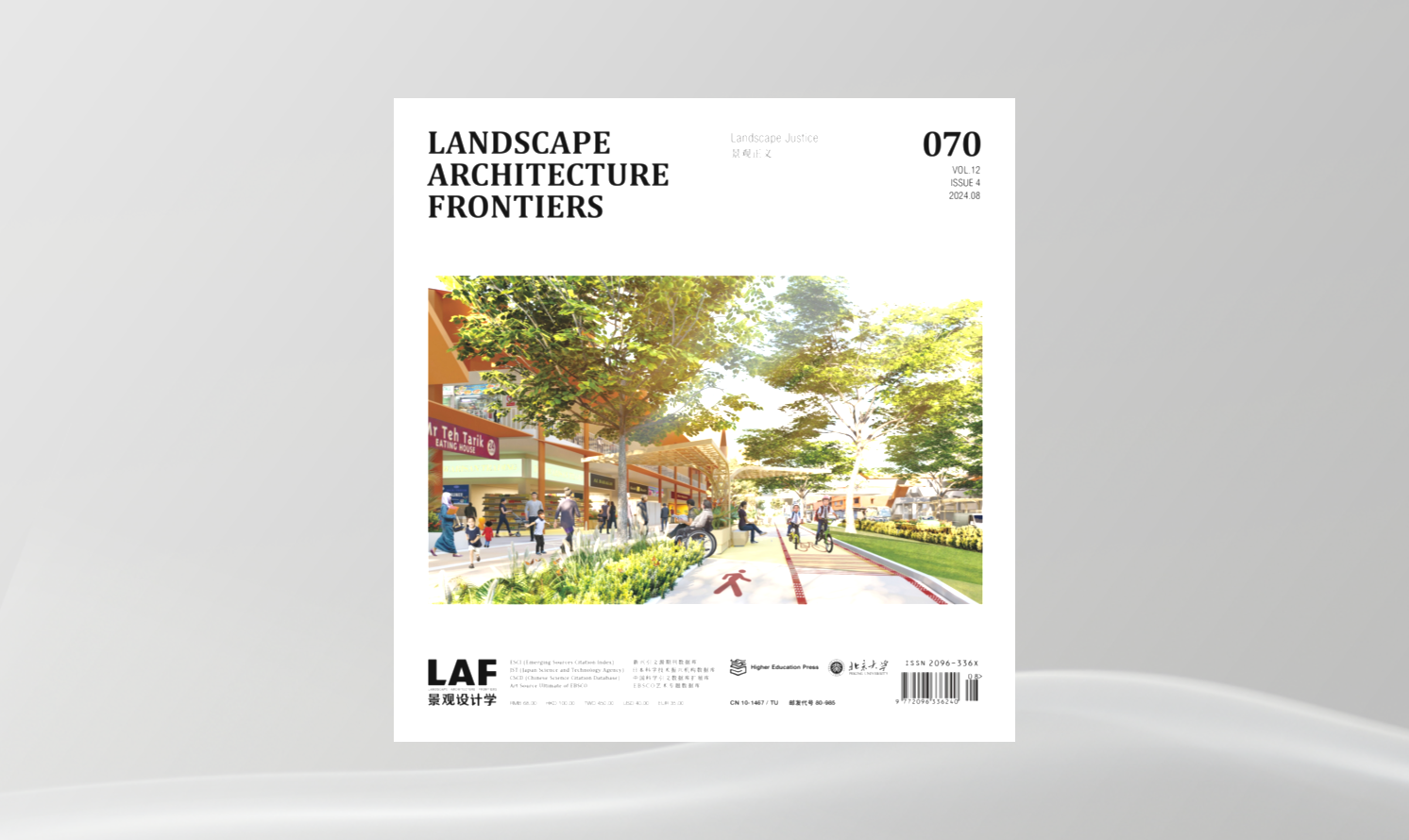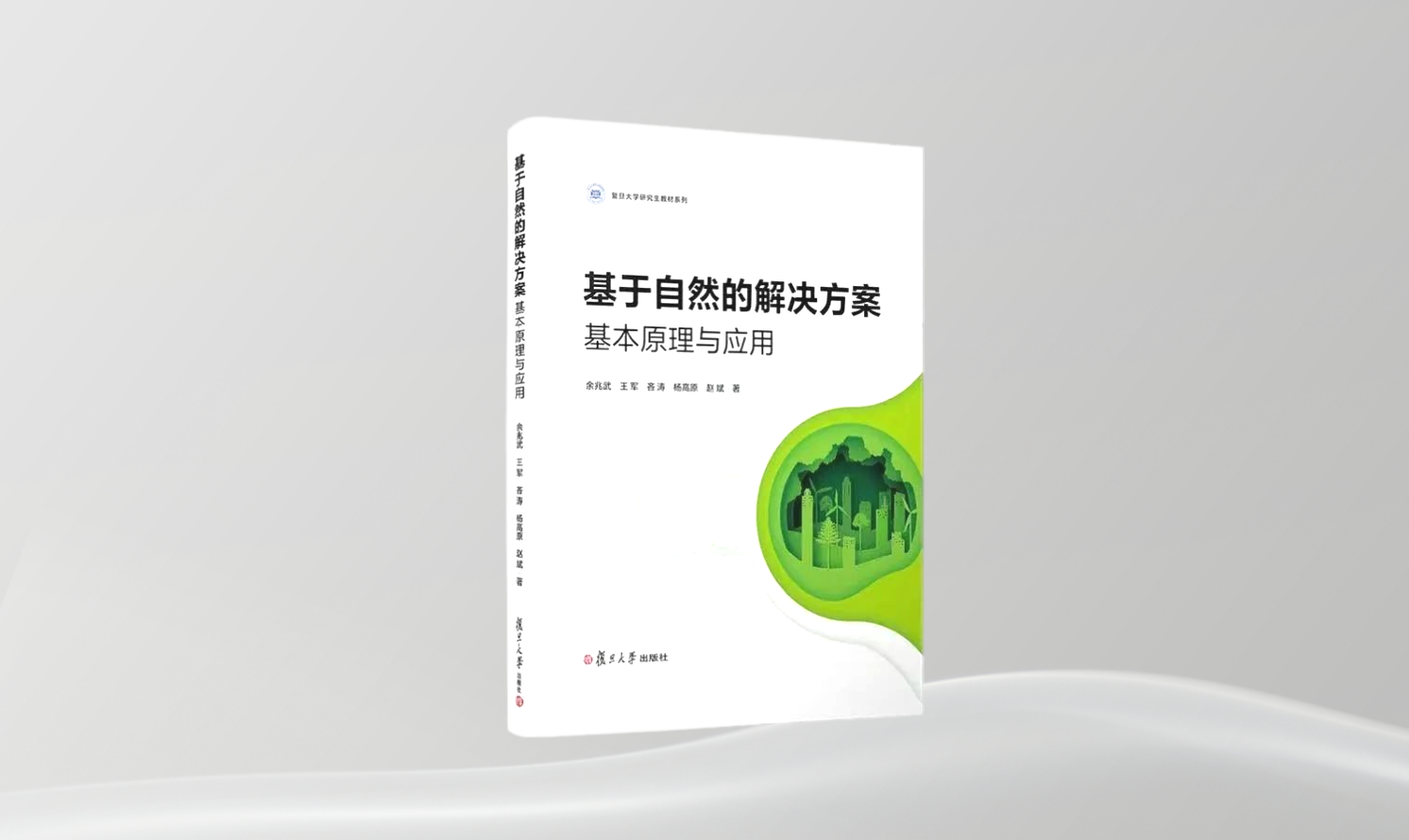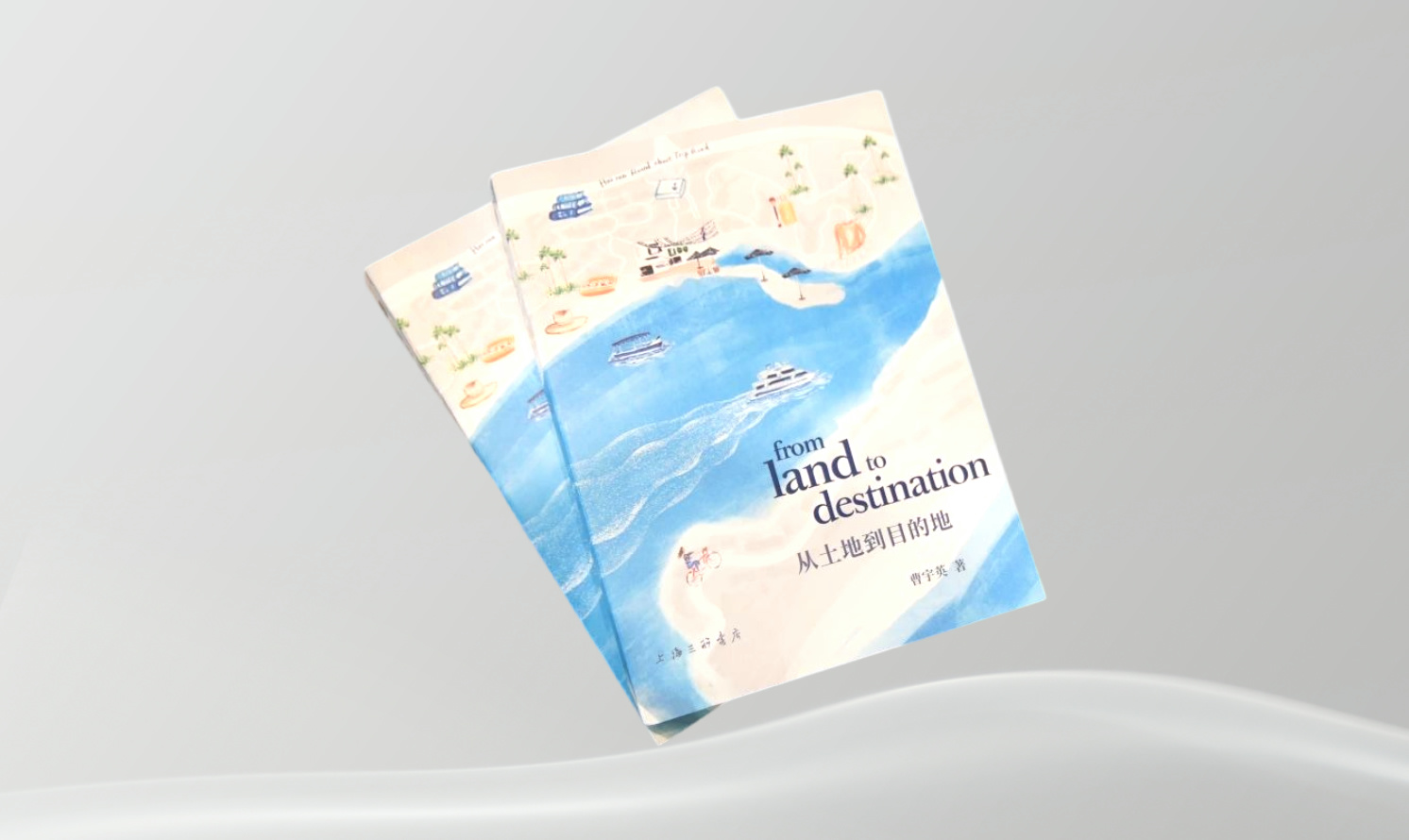共享空間與宜居生活——新加坡實(shí)踐經(jīng)驗(yàn)
Sharing Space and Liveable Life in Singapore Practices
作者:薛菲,劉少瑜 Fei XUE, Stephen Siu Yu LAU
摘要
近年來,共享經(jīng)濟(jì)所引發(fā)的變革對(duì)城市空間和人們的生活方式產(chǎn)生了深遠(yuǎn)的影響���?����?焖俚某擎?zhèn)化進(jìn)程和人口的急劇擴(kuò)張使得城市中挑戰(zhàn)與機(jī)遇并存���,因而亟待構(gòu)建一個(gè)周密詳盡的社會(huì)規(guī)劃和管理體系來應(yīng)對(duì)這一問題�。新加坡是亞洲地區(qū)少有的在高密度前提下仍然能夠達(dá)到高宜居標(biāo)準(zhǔn)的城市范例�。筆者通過策略回顧和案例研究��,展示了新加坡在城市宜居性和可持續(xù)發(fā)展方面的實(shí)踐經(jīng)驗(yàn)���,并提出決策制定�、空間規(guī)劃和場(chǎng)地管理三個(gè)關(guān)鍵議題��。該研究有助于在共享城市發(fā)展的新紀(jì)元推動(dòng)實(shí)施各項(xiàng)可改善公共健康狀況和提高生活品質(zhì)的策略�����。
關(guān)鍵詞
共享空間���;宜居性���;綜合發(fā)展;新加坡
Abstract
In recent years, the revolution brought by sharing economy has significantly shaped the urban space and lifestyles. Cities face both huge challenges and great opportunities in the rapid urbanization and population aggregation, which depends on a well-planned and -governed human society. Singapore is one of few high-dense cities that are able to achieve high liveable standards in the Asian context. The authors reveal the Singapore practices on urban liveability and sustainable development via strategy review and case study, which addresses three key issues in policy-making, spatial arrangement, and site management. This research contributes to facilitating the implementation of public health promotion and quality life improvement in the new era of sharing city.
Key words
Sharing Space; Liveability; Integrated Development; Singapore
城市公共空間環(huán)境設(shè)計(jì)創(chuàng)新途徑與導(dǎo)向研究
Research on Innovative Approaches and Guidance for Urban Public Space Design
作者:姚雪艷�,徐孟 Xueyan YAO, Meng XU
摘要
在現(xiàn)今城市建設(shè)趨于理性、設(shè)計(jì)項(xiàng)目緊縮的行業(yè)背景下���,創(chuàng)新策略成為轉(zhuǎn)“危機(jī)”為“契機(jī)”之所必需��?�?v觀既往城市公共空間環(huán)境設(shè)計(jì)創(chuàng)新措施�����,無不與因城市發(fā)展演變而出現(xiàn)的政治體制變革�����、空間環(huán)境惡化�、社區(qū)精神匱乏、城區(qū)產(chǎn)業(yè)轉(zhuǎn)型����、生態(tài)功能退化等問題緊密相關(guān)。本文針對(duì)我國(guó)城市公共空間環(huán)境建設(shè)現(xiàn)存問題����,提出強(qiáng)化“用戶體驗(yàn)”、回歸“城市自然”����、跨學(xué)科“技術(shù)協(xié)作”、成本控制“開源節(jié)流”等創(chuàng)新途徑�,以期使當(dāng)代城市環(huán)境設(shè)計(jì)遵循促進(jìn)城市人文意識(shí)提升與生態(tài)環(huán)境復(fù)興的可持續(xù)發(fā)展之路��。
關(guān)鍵詞
城市公共空間�����;創(chuàng)新;用戶體驗(yàn)���;城市生態(tài)�;學(xué)科交叉
Abstract
For designers suffering from slowed-down urban development and shrinking economics, innovative design can help turn a slow down into an opportunity. As various issues emerge with the development of urban areas, such as the political renovation, spatial environment deterioration, erosion of community spirit, industrial transformation, and ecosystem degradation, innovative strategies can produce better public open space design. This article discusses how enhancing user experience, returning to urban nature, and interdisciplinary technologies can promote social consciousness and revitalize urban ecologies.
Key words
Urban Public Spaces; Innovative Approaches; User Experience; Urban Ecology; Interdiscipline
從所有到所用的共享未來——諸大建談共享經(jīng)濟(jì)與共享城市
From Possession to Use — An Interview with Dajian Zhu on Sharing Economy and Sharing City
作者:諸大建���,佘依爽 Dajian ZHU,Yishuang SHE
摘要
隨著共享經(jīng)濟(jì)在中國(guó)及世界范圍產(chǎn)生越來越深遠(yuǎn)的影響���,其定義、目的和如何構(gòu)建成為城市公共管理學(xué)科討論的方向之一�。此次訪談基于共享經(jīng)濟(jì)的概念展開,指出共享經(jīng)濟(jì)產(chǎn)生的背景是從擁有導(dǎo)向轉(zhuǎn)向使用導(dǎo)向的消費(fèi)社會(huì)的轉(zhuǎn)型����,是消費(fèi)模式和生活方式的變革,并以提高生活的效用與福祉為最終目的�����。因此,在中國(guó)現(xiàn)階段從增量規(guī)劃向存量規(guī)劃轉(zhuǎn)型的城鎮(zhèn)化過程中���,順應(yīng)共享經(jīng)濟(jì)的發(fā)展趨勢(shì)���,以最低的“物質(zhì)擁有”完成最高的“使用效用”是城市發(fā)展的關(guān)鍵所在。
關(guān)鍵詞
共享經(jīng)濟(jì)�;共享城市;存量規(guī)劃
Abstract
With the increasing influence of sharing economy in China and throughout the world, its definition, objectives, and development methods have become one of the topics for the science of urban public management. This interview points out that the sharing economy has emerged under the background of the transition of consumer society from possession-orientation to use-orientation, and the revolution of consumption mode and lifestyle with an ultimate aim of improving the efficiency and well-being. As a result, in China’s urbanization process which is now shifting from incremental planning to inventory planning, the key for urban development lies in the promotion of the sharing economy and achieving maximum utility with minimum material possession.
Key words
Sharing Economy; Sharing City; Inventory Planning
從空間視角看共享經(jīng)濟(jì)時(shí)代的城市
Cities in the Era of Sharing Economy: From a Perspective of Urban Space
作者:陳立群 Liqun CHEN
摘要
城市是現(xiàn)代生活最重要的“容器”���,其中不僅包括商品和信息的交換����,還包括社會(huì)關(guān)系的生產(chǎn)和消費(fèi)�����。也正是城市對(duì)商品����、信息、人�、關(guān)系的集聚,催生了共享經(jīng)濟(jì)的繁榮和增長(zhǎng)。從Airbnb�����、Uber�����,到共享單車�����、共享辦公空間����,“共享”似乎成為了一種新的經(jīng)濟(jì)模型和范式���,隨移動(dòng)互聯(lián)網(wǎng)向每個(gè)人的日常生活席卷而來����。面對(duì)以共享經(jīng)濟(jì)為代表的新經(jīng)濟(jì)模式和更加開放的社會(huì)關(guān)系����,城市生活不可避免地發(fā)生了巨大變化。而當(dāng)我們用“共享”的視角看待城市,將共享經(jīng)濟(jì)的理念應(yīng)用到城市中���,這不僅意味著城市內(nèi)部動(dòng)力和社會(huì)經(jīng)濟(jì)過程將迎來變化��,也意味著城市空間將重新構(gòu)建����。為了應(yīng)對(duì)這些變化和挑戰(zhàn)��,已經(jīng)有多個(gè)城市開始了對(duì)更加共享�����、開放的城市圖景的探索��,而我們當(dāng)前的城市空間框架似乎并未完全做好準(zhǔn)備����。本文從空間性的視角出發(fā),將共享經(jīng)濟(jì)及其特征對(duì)應(yīng)到城市空間的探討中��,剖析和展望這場(chǎng)共享革命中的城市空間���。
關(guān)鍵詞
共享經(jīng)濟(jì)��;城市�;公共空間;空間性
Abstract
The city, where modern urban life happens, not only allows for the exchange of goods and information, but also accommodates the production and consumption of social relations. The gathering of goods, information, people, and social relations in cities has promoted the growth of sharing economy. From Airbnb, Uber, to shared bicycles and shared office space, the idea of "sharing" seems to have become a new economic model and paradigm which, along with the mobile Internet, is rolling into everyone's daily life. In facing the new economy, which is characterized by sharing economy, and the more open social relations, urban life is inevitably undergoing dramatic changes. When we examine the city through the lens of sharing and apply the concept of sharing into urban design and management, it will not only bring great changes to the city's internal dynamics and socio-economic process, but also lead to a reconstruction of urban space. Responding to these changes and challenges, a number of cities are seeking for a more shared and open future, yet which could not be supported by the current urban space. This article tries to discuss the sharing economy and its characteristics with the study of contemporary urban space in order to envision the future of urban space within this revolution of sharing.
Key words
Sharing Economy; City; Public Space; Spatiality
首爾共享城市:依托共享解決社會(huì)與城市問題
Sharing City Seoul: Solving Social and Urban Issues through Sharing
作者:知識(shí)共享韓國(guó) Creative Commons Korea
摘要
韓國(guó)首爾市政府于2012年9月宣布“首爾共享城市”計(jì)劃�����,旨在復(fù)興城市共享文化以解決社會(huì)和經(jīng)濟(jì)問題����。為應(yīng)對(duì)經(jīng)濟(jì)放緩、福利減少���、環(huán)境污染����、社會(huì)隔離和社區(qū)精神缺失等一系列社會(huì)和城市問題�����,首爾市政府領(lǐng)導(dǎo)提出這一計(jì)劃����,希望通過建立共享生態(tài)系統(tǒng)并將其作為首爾經(jīng)濟(jì)的一部分����,實(shí)現(xiàn)在不投入額外資源的前提下緩解上述壓力的目標(biāo)����。首爾案例的獨(dú)特性在于��,其基于一種創(chuàng)新性的公私合營(yíng)模式而施行�����,共享政策作為一項(xiàng)城市政策是由市政府而非私營(yíng)部門主導(dǎo)�。通過奠定堅(jiān)實(shí)的基礎(chǔ),使共享城市項(xiàng)目深入人心���,以及與市民及地區(qū)級(jí)政府合作�,攜手傳播共享政策�����,首爾市正在積極探索���,為建立共享城市樹立榜樣����。
基于知識(shí)共享協(xié)議(Creative Commons Attribution 4.0 International License),本文選編自《首爾用共享描繪城市》一書�����。通過闡述推進(jìn)首爾共 享城市發(fā)展進(jìn)程的城市戰(zhàn)略�,包括完善法律制度、支持共享企業(yè)�����、促進(jìn)公民參與等����,本文旨在為探索更加共享、可持續(xù)的城市未來提供愿景和見解��。
關(guān)鍵詞
共享城市���;首爾;政策��;指導(dǎo)方針��;公共私營(yíng)合作制
Abstract
Sharing City Seoul, a plan to revive the sharing culture on a city level to solve the social and economic problems, was proclaimed by the Seoul Metropolitan Government in September 2012. Confronted with a variety of social and urban issues around economic slowdown, welfare decrease, environmental pollution, social isolation and diminishing community spirit, the city leaders of Seoul introduced the plan to reduce pressures in these areas without putting additional resources in, by establishing a sharing ecosystem and embracing it as an integral part of Seoul’s economy. Seoul’s case is unique as the sharing policies were led by the city government as a city policy rather than the private sector, based on a creative, public-private partnership model. The city has taken initiatives to lead by example by building the foundation for the sharing city project to take root and spreading policies through collaboration with citizens and district level governments as partners.
This paper is a derivative of Seoul Draws a City through Sharing under the Creative Commons Attribution 4.0 International License. By elaborating on the city’s strategies that have enabled Sharing City Seoul to make progress, including improving laws and institutions, supporting sharing enterprises, and facilitating citizen participation, this paper explores visions and insights for a more sharing and sustainable urban future.
Key words
Sharing City; Seoul; Policy; Guideline; Public-Private Partnership
社會(huì)復(fù)愈�,數(shù)字再地——以大數(shù)據(jù)策略實(shí)現(xiàn)空間自組織
Social Restoration and Digital Relocalization — A Big Data Strategy for Spatial Self-organization
作者:徐磊青�,言語���,黃舒晴 Leiqing XU, Yu YAN, Shuqing HUANG
摘要
本文介紹了408研究小組+在2016年“上海城市設(shè)計(jì)挑戰(zhàn)賽”中��,針對(duì)衡山路-復(fù)興路歷史文化風(fēng)貌區(qū)的歷史保護(hù)所提出的方案����,并藉此強(qiáng)調(diào)了研究數(shù)據(jù)平臺(tái)與使用者之間關(guān)系的重要性���。該方案主張復(fù)愈而非修復(fù)���,生長(zhǎng)而非生產(chǎn),提倡從多元主體角度去思考?xì)v史風(fēng)貌區(qū)的原真性�����,推動(dòng)當(dāng)下風(fēng)貌區(qū)的保護(hù)與更新���。設(shè)計(jì)方提出架設(shè)“漫步衡復(fù)”和“弄堂之聲”兩大應(yīng)用平臺(tái)�,通過將大數(shù)據(jù)融入城市治理來實(shí)現(xiàn)城市更新����,并力圖使數(shù)據(jù)參與平臺(tái)與城市自組織和空間代理協(xié)調(diào)配合�,形成可以持續(xù)發(fā)揮效用的共同體���。
關(guān)鍵詞
大數(shù)據(jù)��;多元主體�����;自組織���;城市更新;空間代理
Abstract
This article introduces Team 408+’s design for the protection of the Hengshan Road-Fuxing Road Historical and Cultural Area in the 2016 Shanghai Urban Design Challenge, with the aim to emphasize the significance of the relationship between data platforms and their users. In promoting the historical and cultural protection, the design advocates remediation with spatial self-organization rather than restoration with physical development, and encourages multi-stakeholders’ participation. This project also proposes two mobile applications, “Wandering in Heng-Fu” and “Voice of Alleys,” to apply big data into urban management and to establish sustainable communities by harmonizing big data platforms with urban self-organization development and spatial management.
Key words
Big Data; Multiple Stakeholders; Self-organization; Urban Regeneration; Spatial Agency
從可食景觀到活力社區(qū)——四葉草堂上海社區(qū)花園系列實(shí)踐
From Edible Landscape to Vital Communities: Clover Nature School Community Gardens in Shanghai
作者:劉悅來����,范浩陽,魏閩�����,尹科孌���,嚴(yán)建雯 Yuelai LIU, Haoyang FAN, Min WEI, Keluan YIN, Jianwen YAN
摘要
本文基于四葉草堂近年完成的不同類型的社區(qū)花園,探討在當(dāng)下中國(guó)的高密度都市區(qū)中��,公共參與及可食景觀營(yíng)造的可能性和方向。上海四葉草堂青少年自然體驗(yàn)服務(wù)中心的社區(qū)花園實(shí)踐均是在“都市的樸門”理念下展開的�����,通過賦權(quán)給社區(qū)居民�����,提升他們的歸屬感和主人翁精神�����,并建立了政府����、企業(yè)、社會(huì)組織和民眾相互協(xié)作的機(jī)制�����。
關(guān)鍵詞
社區(qū)花園��;可食景觀��;城市更新����;公眾參與
Abstract
This paper discusses the possibility and direction of public participation and edible landscape construction in China's high-density metropolitan areas. It is based on the different types of community gardens completed by Shanghai Clover Nature School Teenager Nature Experience Service Center in recent years under the concept of "Urban Permaculture." By endowing rights to the inhabitants of the community, these examples have helped the participants become owners and established cooperation mechanisms between government, enterprises, social organizations, and the public.
Key words
Community Garden; Edible Landscape; Urban Renewal; Public Participation
同一座公園:圣詹姆斯公園設(shè)計(jì)競(jìng)賽方案
One Park: A Proposal for St. James Park Design Competition
作者:WRT設(shè)計(jì)事務(wù)所 WRT
摘要
通過一種變革性的設(shè)計(jì)方式�����,圣詹姆斯公園得以恢復(fù)其在圣何塞市中心歷史區(qū)域的核心地位��,并成為推動(dòng)圣何塞市復(fù)興的催化劑�����。WRT設(shè)計(jì)事務(wù)所采用的設(shè)計(jì)策略聚焦于如何激活公園����,連接公園內(nèi)部與周邊區(qū)域�����,以及對(duì)其所在社區(qū)和歷史元素的尊重����,旨在將公園重塑為圣何塞市民最喜愛的城市目的地。
關(guān)鍵詞
圣詹姆斯公園����;城市綠地�;復(fù)興�;公眾參與
Abstract
Uniting St. James Park through a transformative design process positions the park as the center of its historic district and as a catalyst for the ongoing revitalization of downtown San José. WRT’s design strategies focus on park activation, connections within and around the park, and celebration of community and history to reimagine the park as a favorite destination for the residents of San José.
Key words
St. James Park; Urban Green Space; Revitalization; Public Engagement
打造永恒之美:新加坡國(guó)立大學(xué)中的共享景觀層設(shè)計(jì)和場(chǎng)所營(yíng)造
Crafting the Timeless Beauty: Designing of Shared Landscape Layers and Place-Making at the National University of Singapore
作者:STX景觀設(shè)計(jì)事務(wù)所 STX Landscape Architects
摘要
城市密度的日益增加深刻影響了城市空間的形態(tài)及人們的生活方式����,隨之產(chǎn)生了對(duì)于社會(huì)中具有不同功能的分層景觀的需求,以通過精巧的設(shè)計(jì)來融合“多樣性”�����。而便于人們?cè)谌后w中或個(gè)體之間分享知識(shí)�、傳播信仰和價(jià)值觀,并最終推動(dòng)社會(huì)發(fā)展的學(xué)習(xí)場(chǎng)所��,則是體現(xiàn)“共享范式”的理想環(huán)境���。本文將著重討論現(xiàn)代視角下分層景觀的特征�����,并以新加坡國(guó)立大學(xué)大學(xué)城的跨文化愿景為例���,探討設(shè)計(jì)方法、尺度及文化在推動(dòng)設(shè)計(jì)、分層及共享過程中的作用��。
關(guān)鍵詞
場(chǎng)所營(yíng)造�;共享的景觀層;多樣性����;互動(dòng);容納���;合作
Abstract
Increasing intensification of urban density impacts urban spaces and lifestyles, necessitating in society a landscape canvas suitably layered for diverging needs and goals, and ideally blended to cater to “multiplicities” in well-designed fusions. Places of learning — where knowledge, beliefs and values are transferred to and between groups and individuals to better society — is an ideal environment where this “sharing paradigm” manifests. This paper focuses on layered landscapes of contemporary dimensions; approach, scale and cultural references, contributing to design, layering, and sharing, through the cross-cultural visions of the University Town of National University of Singapore.
Key words
Place Making; Shared Landscape Layers; Diversity; Interaction; Inclusion; Collaboration
流浪“巢”——福州琴亭高架橋橋下空間改造
“Nests” for the Homeless — Reutilization of the Space under Qinting Viaduct in Fuzhou
作者:胡建國(guó) Jianguo HU
摘要
在當(dāng)代城市中����,流浪人群在路邊��、廣場(chǎng)�、橋底等地露宿的情況并不少見。針對(duì)這一現(xiàn)象�����,筆者展開了深入調(diào)研����,試圖為這一特定目標(biāo)人群探尋改善現(xiàn)狀的潛在方案�。該設(shè)計(jì)提出“巢”的概念��,并以福州火車站附近的琴亭高架橋橋下空間改造為例����,展示利用廢棄集裝箱與高架橋橋下空間,為流浪人群打造生態(tài)�����、可持續(xù)的休憩“巢”空間的方案����。在充分利用城市公共空間的同時(shí)��,在快速發(fā)展的城市中呼喚人文關(guān)懷���,注入新的活力�。
關(guān)鍵詞
流浪人群��;集裝箱���;高架橋����;巢;可持續(xù)性
Abstract
It is common to see homelessness living in the roadside, square, under the bridge and other places in contemporary cities. In this project, the designer undertook an investigation in order to explore a potential solution of creating shelters for the homeless. Taking a concept of “nest,” the design reuses the space under the Qinting Viaduct near the Fuzhou Railway Station, creating a series of ecological and sustainable “nest” space by cutting, superposing, and arranging disused containers for homeless people. By reutilizing delicate urban spaces, this project injects humanistic care and vitality into the rapidly developing city.
Key words
Homelessness; Container; Viaduct; Nest; Sustainability
間隙香港
Interstitial Hong Kong
作者:陸小璇�����,伊凡?瓦林�,蘇姍?特朗芙 Xiaoxuan Lu, Ivan Valin, Susanne Trumpf
摘要
“間隙空間”是那些跨越邊界或使邊界在此交錯(cuò)的中間地帶?��!伴g隙香港”項(xiàng)目關(guān)注香港的“休憩處”�,即一種以超小尺度著稱�����、通常置身于香港“犄角旮旯”之中的獨(dú)特公共空間類型�。休憩處并非優(yōu)雅從容地“融入”城市:它們因分布廣、面積小而鮮少被人關(guān)注�����,并通常以臨時(shí)����、投機(jī)的方式被轉(zhuǎn)變?yōu)楣苍O(shè)施����。事實(shí)上�����,休憩處是處于中間地帶的����、多余、模糊和殘留的空間����,它們反映著香港的文化��、生態(tài)和地理環(huán)境�。間隙香港項(xiàng)目對(duì)香港的這類小型景觀空間進(jìn)行批判性的空間分析,提取和傳達(dá)此類景觀所共有的空間����、組織或過程特征。該項(xiàng)目從城市環(huán)境和生態(tài)環(huán)境兩種尺度展開���,并參考從使用者視角出發(fā)的構(gòu)造元素組合類型���,來分析休憩處的特征���。在間隙香港項(xiàng)目中,休憩處不僅被視作一種物理實(shí)體����,亦是一種概念性和過程性的設(shè)計(jì)策略。
關(guān)鍵詞
間隙�����;香港��;偶然性��;共享空間
Abstract
Interstitial spaces are in-between spaces situated within or bridging over the various built structures in the city’s dense urban environment. The project Interstitial Hong Kong focuses on Hong Kong’s Sitting-out Areas, a unique public space typology distinguished by their small size and incidence in the interstices of Hong Kong’s physical structure. Often overseen in their high occurrence but small size, and opportunistically transformed into a public object with value, sitting-out areas don not “fit” in the city; they are in-between, redundant, vague, leftover spaces, and reflect the cultural, ecological, and geographical settings of Hong Kong. By developing a critical spatial analysis of small landscape spaces in Hong Kong, as well as collecting and communicating their unifying spatial, organizational or procedural attributes, Interstitial Hong Kong examines Sitting-out Areas at the scale of both immediate urban and ecological contexts, and the spatial assemblage in reference to the occupant. The project looks at Sitting-out Areas as not only a physical artifact, but also a conceptual and procedural design strategy.
Key words
Interstitial; Hong Kong; Contingency; Shared Space
不同尋常的河流
Uncommon River
作者:梅爾韋?拜德爾�,盧博?格奧爾基耶夫 Merve BEDIR, Ljubo GEORGIEV
摘要
本文以保加利亞的馬里查河為研究對(duì)象,從公共空間���、景觀����、基礎(chǔ)設(shè)施和經(jīng)濟(jì)層面����,呈現(xiàn)并探討了“共有”和“共有物”的概念�。共有的概念質(zhì)詢了人們所假定的“河流作為邊界”的屬性��,即認(rèn)為該邊界劃分了自然與文化����、北方與南方、“歐洲”與“非歐洲”��、私有與公共等��;使我們將經(jīng)濟(jì)視作一種有關(guān)聯(lián)絡(luò)��、分享���、制造��、開放���、關(guān)聯(lián)和生產(chǎn)等日常行為的活動(dòng)�����;亦帶來了探索新型共存模式的機(jī)遇���,而非僅為現(xiàn)存模式尋找替代品���。
由人類日復(fù)一日共同享用及生產(chǎn)的思想、種子����、水源、空氣��、文化和空間�����,都是共有物�。它們跨越時(shí)間和地域界限,是集體共同努力����、研究、思考和創(chuàng)造的結(jié)晶�。在2015年的“建筑周”活動(dòng)期間,我們探索了普羅夫迪夫的城市網(wǎng)絡(luò)���,并以河為媒介來創(chuàng)造囊括本土和跨國(guó)雙重尺度的新網(wǎng)絡(luò)�����,聚焦于沿河或跨河的�����、水上或水下的得以承載民眾集體行為的“公有”空間���。我們或翻閱文獻(xiàn)�,或聆聽訴說����;或爭(zhēng)辯,或想象�����;或沐浴陽光之下��,或泛舟河道之中��;且不斷學(xué)習(xí)��、創(chuàng)作�����、再創(chuàng)作��。
關(guān)鍵詞
共有�����;共有物����;邊界;馬里查河
Abstract
This paper will present and discuss the notion of communing and common(s) in terms of public space, landscape, infrastructure, and economics, focusing on Maritsa River. Commoning as questioning the assumed nature of the river as a border: a border between nature and culture, north and south, “European” and “non-European,” private and public…. Commoning as discussing economy as the everyday actions of connecting, sharing, making, opening, relating and producing together. Commoning as exploring new co-existences and not as creating a substitute to the existing.
Ideas, seeds, water, air, cultures and spaces, which we collectively produce each and every day, all of those are commons. They are the results of collective efforts, research, thought and creation across time and regions. During One Architecture Week 2015, we explored the networks in Plovdiv and creating new ones locally, and across countries, through spaces of collective action along and across the river, on and under the water. We read, listened, debated, imagined, sunbathed, rowed, learned, produced, and re-produced.
Key words
Commoning; Common(s); Border; Maritsa River
 京公海網(wǎng)安備 110108000058號(hào)
京公海網(wǎng)安備 110108000058號(hào)
